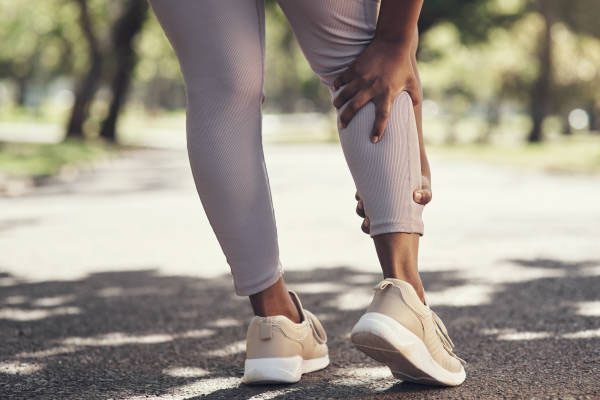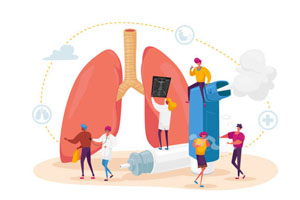Discover the science behind muscle soreness recovery and learn how to optimize your healing process Find out the ideal recovery time and practical tips for faster muscle soreness relief
Have you ever finished a tough workout only to find yourself dealing with muscle soreness the next day? Most of us have experienced this discomfort at some point in our fitness journeys. While muscle soreness is a natural part of the exercise process, understanding the optimal recovery time is essential for your overall well-being.
Whether you're a seasoned athlete or just beginning your fitness routine, it's crucial to grasp the factors that influence muscle soreness recovery. This article delves into the science of muscle soreness and provides practical insights into how you can optimize your recovery time. From exercise intensity to nutrition and rest, we'll explore the key elements that can help you bounce back quicker and get back to your fitness goals.

Understanding Muscle Soreness
1. What is muscle soreness, and why does it occur?
Muscle soreness, often referred to as Delayed Onset Muscle Soreness (DOMS), is the discomfort or pain experienced in muscles following intense physical activity or unfamiliar exercise. It typically manifests 12 to 24 hours after the workout and peaks around 48 hours. DOMS is a result of microscopic damage to muscle fibers, particularly during eccentric movements (lengthening of the muscle under tension).
2. Types of Muscle Soreness
There are two main types of muscle soreness:
a. Delayed Onset Muscle Soreness (DOMS): This type of soreness occurs 12-24 hours post-exercise and is characterized by stiffness, tenderness, and reduced range of motion. It's often associated with activities that involve eccentric contractions, such as downhill running or weightlifting.
b. Acute Muscle Soreness: Acute soreness is more immediate and linked to muscle fatigue during exercise. It subsides relatively quickly, typically within hours or a day after exercise.
Understanding the type of soreness you're experiencing can help determine the appropriate recovery strategies.
Factors Affecting Muscle Soreness Recovery
1. Intensity and Type of Exercise
The intensity and type of exercise are significant factors affecting muscle soreness recovery:
a. Intensity: High-intensity workouts, especially those involving eccentric muscle contractions, such as weightlifting or plyometrics, often lead to more pronounced muscle soreness. The greater the intensity, the more likely it is to cause muscle fiber damage and inflammation, resulting in longer recovery periods.
b. Type of Exercise: The type of exercise you engage in plays a role as well. Eccentric movements, where muscles lengthen under tension, tend to cause more soreness than concentric or isometric movements. For instance, activities like downhill running or lowering weights slowly in resistance training are associated with greater soreness due to the eccentric component.
Understanding the intensity and type of exercise you're performing can help you anticipate the level of soreness and plan your recovery accordingly.
2. Individual Variations
Recovery time from muscle soreness can vary significantly from person to person due to various individual factors:
a. Age: Age can influence how quickly your muscles recover. Younger individuals typically experience faster recovery times than older individuals. The youthful body tends to repair and adapt more efficiently, making soreness less prolonged.
b. Fitness Level: Your current fitness level also matters. Regular exercisers may recover more quickly because their bodies have adapted to the physical stress of workouts. Novices or those who are new to intense exercises may experience more extended soreness initially.
c. Genetics: Genetic factors play a role in muscle recovery. Some individuals may have genetic predispositions that affect their ability to recover from muscle soreness efficiently. This is why two people doing the same workout may experience different recovery times.
d. Prior Training Experience: If you've been consistently training over time, your body becomes better at handling muscle soreness. Regular workouts condition your muscles to repair and adapt, potentially reducing recovery time.
Recognizing these individual variations can help you better understand your own recovery process and set realistic expectations for muscle soreness duration.
3. Nutrition and Hydration
Proper nutrition and hydration are essential for muscle soreness recovery:
a. Protein: Consuming an adequate amount of protein is crucial for muscle repair and growth. Protein provides the necessary amino acids to help your muscles recover faster. Incorporate lean sources of protein into your diet like chicken, fish, tofu, and legumes.
b. Hydration: Dehydration can exacerbate muscle soreness. Staying well-hydrated ensures that your muscles function optimally and reduces the risk of cramps and prolonged soreness. Drink plenty of water, and consider sports drinks for electrolyte replenishment after intense workouts.
4. Rest and Sleep
Rest and sleep are fundamental aspects of muscle soreness recovery:
a. Rest Days: Schedule rest days between intense workouts to allow your muscles time to recover. Overtraining can lead to more prolonged soreness and increased injury risk.
b. Sleep: Quality sleep is when most muscle repair and growth occurs. Aim for 7-9 hours of sleep each night to support effective recovery. Poor sleep can hinder muscle soreness resolution.
5. Active Recovery Techniques
Active recovery techniques can help alleviate muscle soreness and enhance the recovery process:
a. Light Exercise: Engaging in low-intensity exercises like walking or swimming on your rest days can stimulate blood flow to sore muscles, reducing stiffness and discomfort.
b. Stretching: Incorporate gentle stretching exercises to improve flexibility and relieve muscle tightness. Yoga and static stretching can be particularly beneficial.
c. Massage: Regular massages from a professional therapist or self-massage with foam rollers can aid in muscle recovery by reducing muscle tension and promoting circulation.
Implementing these strategies can help optimize your muscle soreness recovery and get you back to your fitness routine more quickly.
Recommended Recovery Timeframes
1. Recovery Time for Typical Delayed Onset Muscle Soreness (DOMS)
Delayed Onset Muscle Soreness (DOMS) is the muscle soreness that often occurs 24-72 hours after intense exercise. The recovery time for DOMS can vary based on several factors:
a. Intensity of Exercise: The more intense your workout, the longer it may take for DOMS to resolve. High-intensity activities like heavy weightlifting or intense sprinting can result in more extended recovery times.
b. Duration of Soreness: DOMS typically peaks within 48 hours and subsides within 72 hours. If your soreness persists beyond this timeframe, it may indicate a need to adjust your training routine or seek medical advice.
2. Recovery Time for Acute Muscle Soreness
Acute muscle soreness is the immediate soreness felt during or immediately after exercise. Recovery time for acute soreness is typically shorter:
a. Immediate Relief: Acute soreness should subside shortly after the exercise ends. Adequate rest and stretching can help alleviate this type of soreness quickly.
b. Hydration and Nutrition: Proper hydration and nutrition can play a significant role in reducing acute soreness. Replenishing fluids and nutrients post-workout aids in a faster recovery.
3. Tips for Speeding Up Recovery
Here are some tips to expedite muscle soreness recovery:
a. Active Recovery: Engaging in low-impact exercises like walking or cycling can promote blood flow and reduce soreness. These activities can be particularly helpful for DOMS.
b. Anti-Inflammatory Measures: Over-the-counter anti-inflammatory medications, ice packs, and compression can help alleviate soreness and inflammation.
c. Proper Warm-Up and Cool Down: Always incorporate a warm-up and cool-down in your exercise routine. A proper warm-up can reduce the risk of acute soreness, while a cool-down can prevent post-workout stiffness.
d. Listen to Your Body: Pay attention to your body's signals. If soreness persists or worsens, it may be necessary to adjust your exercise routine or consult a healthcare professional.
e. Rest and Sleep: Adequate rest and quality sleep are crucial for any type of muscle soreness recovery. Ensure you get enough sleep and schedule rest days between intense workouts.
These sections offer insights into the recovery times associated with DOMS and acute muscle soreness, as well as strategies for expediting the recovery process. They provide valuable information to help readers understand and manage their muscle soreness more effectively.
Common Myths and Misconceptions
1. "No Pain, No Gain" - Debunking the Myth
Many people believe that significant muscle soreness is a sign of a productive workout. This myth suggests that unless you're in pain, you're not making progress. However, it's important to debunk this notion and clarify that muscle soreness is not a definitive indicator of muscle growth or fitness improvement. Overtraining or excessive soreness can be counterproductive and lead to injuries.
While some level of discomfort is expected during exercise, excessive pain is not necessary for effective training. Encourage readers to listen to their bodies and adjust their workouts to achieve a balance between challenge and safety.
2. The Role of Stretching in Muscle Soreness Recovery
Stretching is a common practice in post-workout routines, but its effectiveness in muscle soreness recovery is often debated. This section aims to clarify the role of stretching in the recovery process.
a. Static Stretching: Static stretching, where you hold a stretch for a set period, may not be the most effective way to alleviate muscle soreness. It's essential to emphasize that stretching should be gentle and controlled to avoid further muscle damage.
b. Dynamic Stretching: Dynamic stretching, which involves active movements that mimic the exercise, can be more beneficial in reducing muscle soreness. It improves blood circulation, flexibility, and range of motion.
c. The Importance of Timing: Stretching is most effective when performed as part of a warm-up and cool-down routine. It helps prevent muscle stiffness and can contribute to a faster recovery.
By addressing these topics, readers can gain a better understanding of the "no pain, no gain" myth and the role of stretching in muscle soreness recovery. This knowledge will enable them to make more informed decisions about their workout routines and recovery practices.
FAQs about Muscle Soreness Recovery
Q1: Is muscle soreness an indication of a successful workout?
A1: Not necessarily. While some soreness is expected after exercise, it doesn't always correlate with the effectiveness of your workout. The absence of soreness doesn't mean you didn't make progress, and excessive soreness can be counterproductive or even lead to injuries.
Q2: Should I avoid exercising when my muscles are sore?
A2: You don't have to skip exercise altogether, but it's essential to modify your workout to accommodate muscle soreness. You can engage in light, low-impact activities, such as walking or swimming, to promote blood circulation and help with recovery.
Q3: How long does it take for muscle soreness to go away?
A3: The duration of muscle soreness recovery can vary based on factors like the type and intensity of exercise, individual differences, and how well you manage it. Typically, muscle soreness should improve within 3-5 days. Adequate rest, hydration, and proper nutrition can expedite the recovery process.
Q4: Is stretching effective for reducing muscle soreness?
A4: Stretching can be beneficial for reducing muscle soreness, but it depends on the type of stretching and when you do it. Dynamic stretching as part of a warm-up and cool-down routine can help. Static stretching is best done after a workout to improve flexibility.
Q5: Can I speed up muscle soreness recovery with specific foods or supplements?
A5: While proper nutrition is essential for overall muscle recovery, there's no single food or supplement that guarantees a faster recovery from muscle soreness. A balanced diet rich in protein, vitamins, and minerals can support the healing process, but patience and adequate rest are key factors in recovery.








